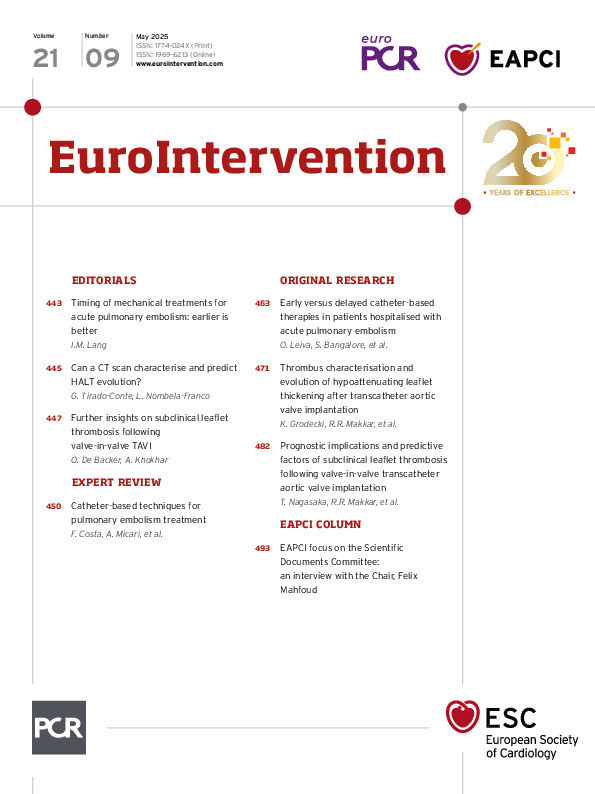Abstract
Background: Quantifying hypoattenuating leaflet thickening (HALT) on computed tomography angiography (CTA) may provide insights into its clinical implications and guide decisions on oral anticoagulation therapy following transcatheter aortic valve implantation (TAVI).
Aims: We sought to assess the association between quantitative CTA features of HALT and its evolution over time in a real-world cohort after TAVI.
Methods: Among 612 patients who underwent CTA 30 days post-TAVI with balloon-expandable bioprostheses, HALT was detected in 118 (19%). We prospectively followed 99 patients who had undergone a second CTA at 1 year to assess HALT progression. Thrombus volume and mean attenuation were quantified using semiautomated software, and various parameters of bioprosthetic deformation were analysed.
Results: Complete resolution of HALT was observed in 43 patients. Multivariate logistic regression showed that lower thrombus attenuation was an independent predictor of HALT resolution (odds ratio [OR] 0.45; p=0.030), along with the eccentricity index (OR 0.42; p=0.003), deformation index (OR 0.53; p=0.005), and implant canting (OR 1.88; p=0.026). In the 56 patients without complete HALT resolution, thrombus evolution was visually categorised as regression (48%), stability (29%), or progression (23%). In a quantitative assessment, regression was associated with a significant decrease in thrombus volume (291 mm³ to 130 mm³; p=0.007), while progression showed an increase (187 mm³ to 667 mm³; p=0.005). The change in thrombus volume between 30 days and 1 year correlated with the magnitude of changes in mean transvalvular gradients over the same period (r=0.462; p<0.001).
Conclusions: Quantitative thrombus characterisation on CTA is predictive of HALT resolution and correlates with the haemodynamic performance of transcatheter aortic valves.
Sign up for free!
Join us for free and access thousands of articles from EuroIntervention, as well as presentations, videos, cases from PCRonline.com

